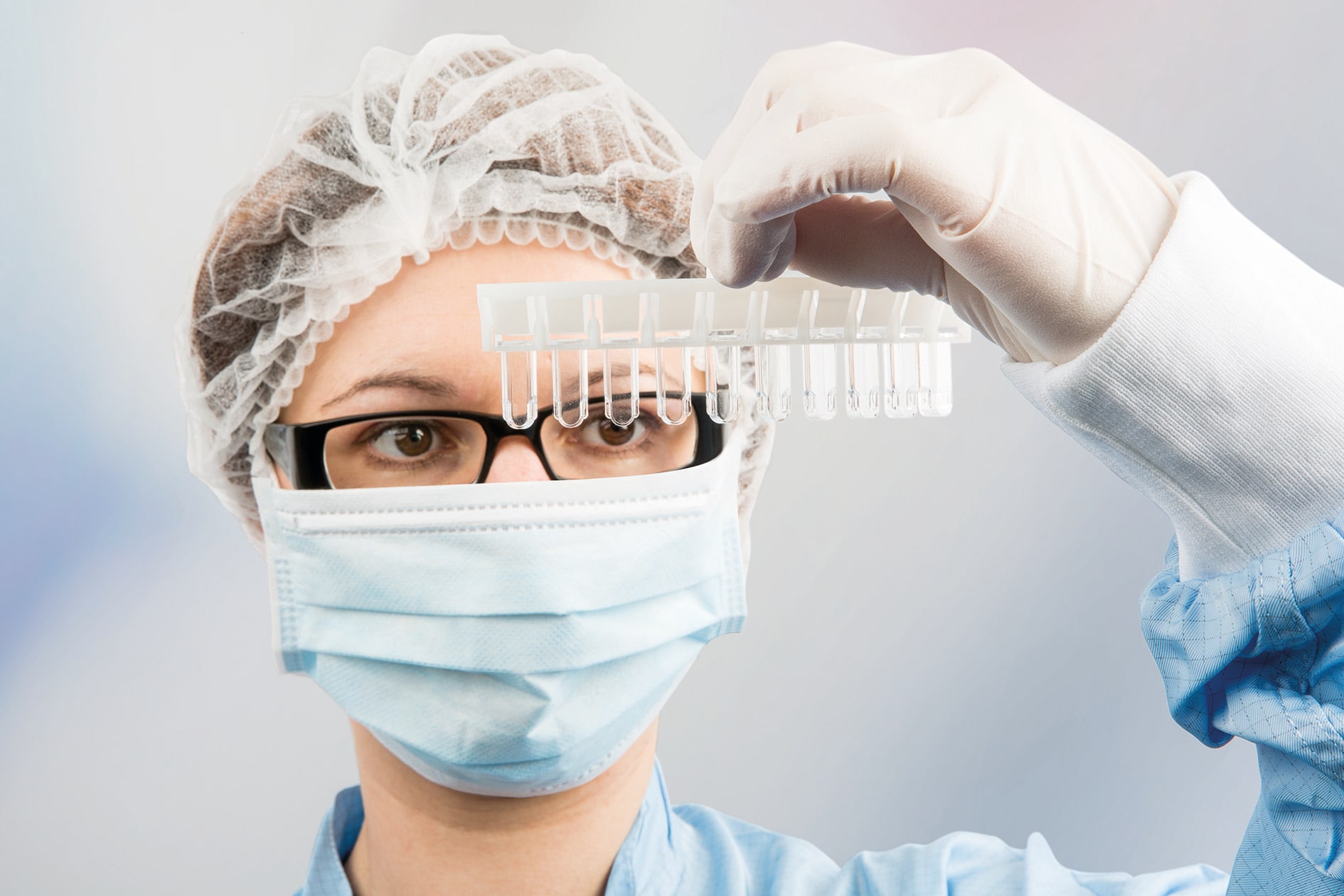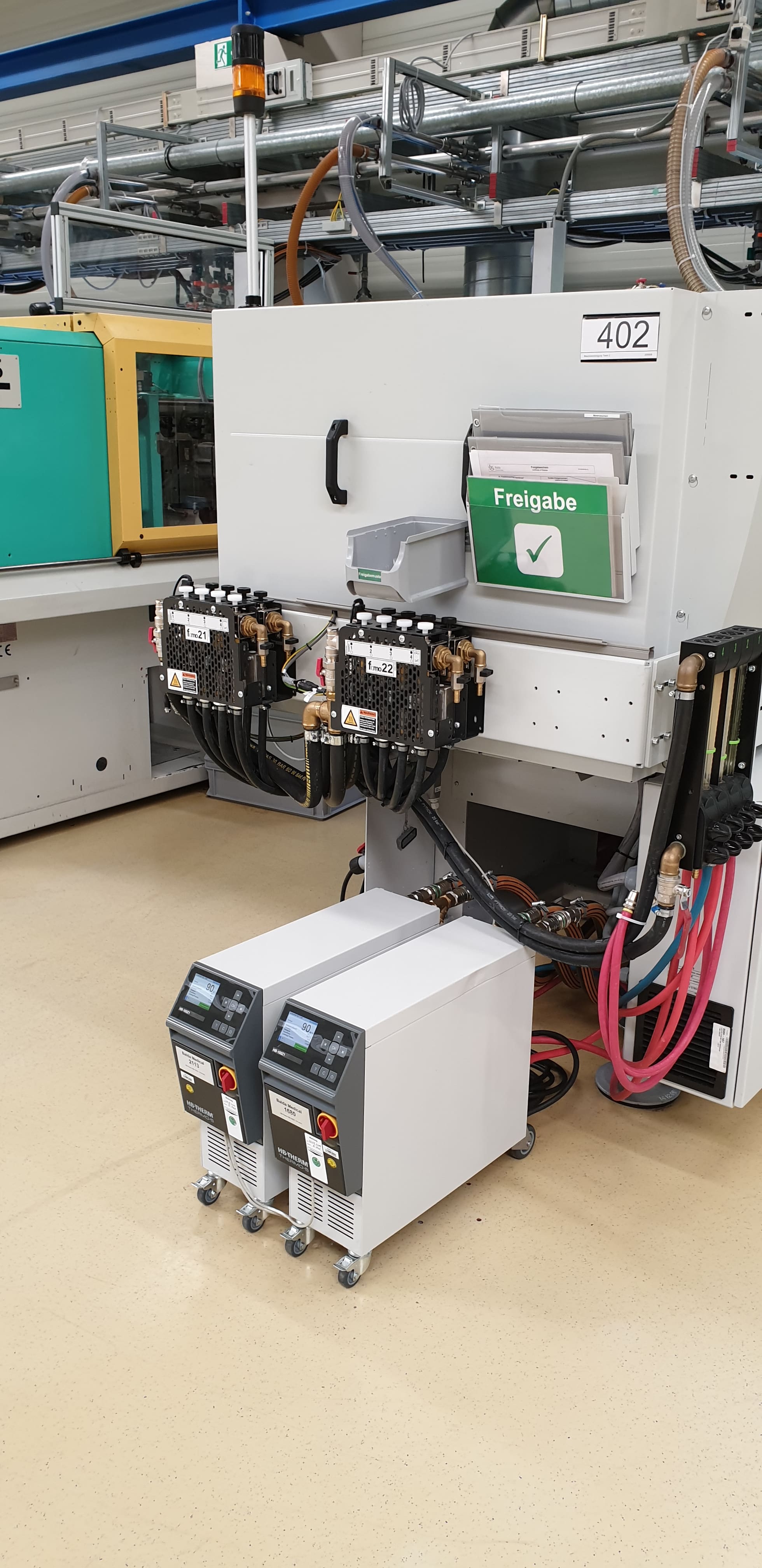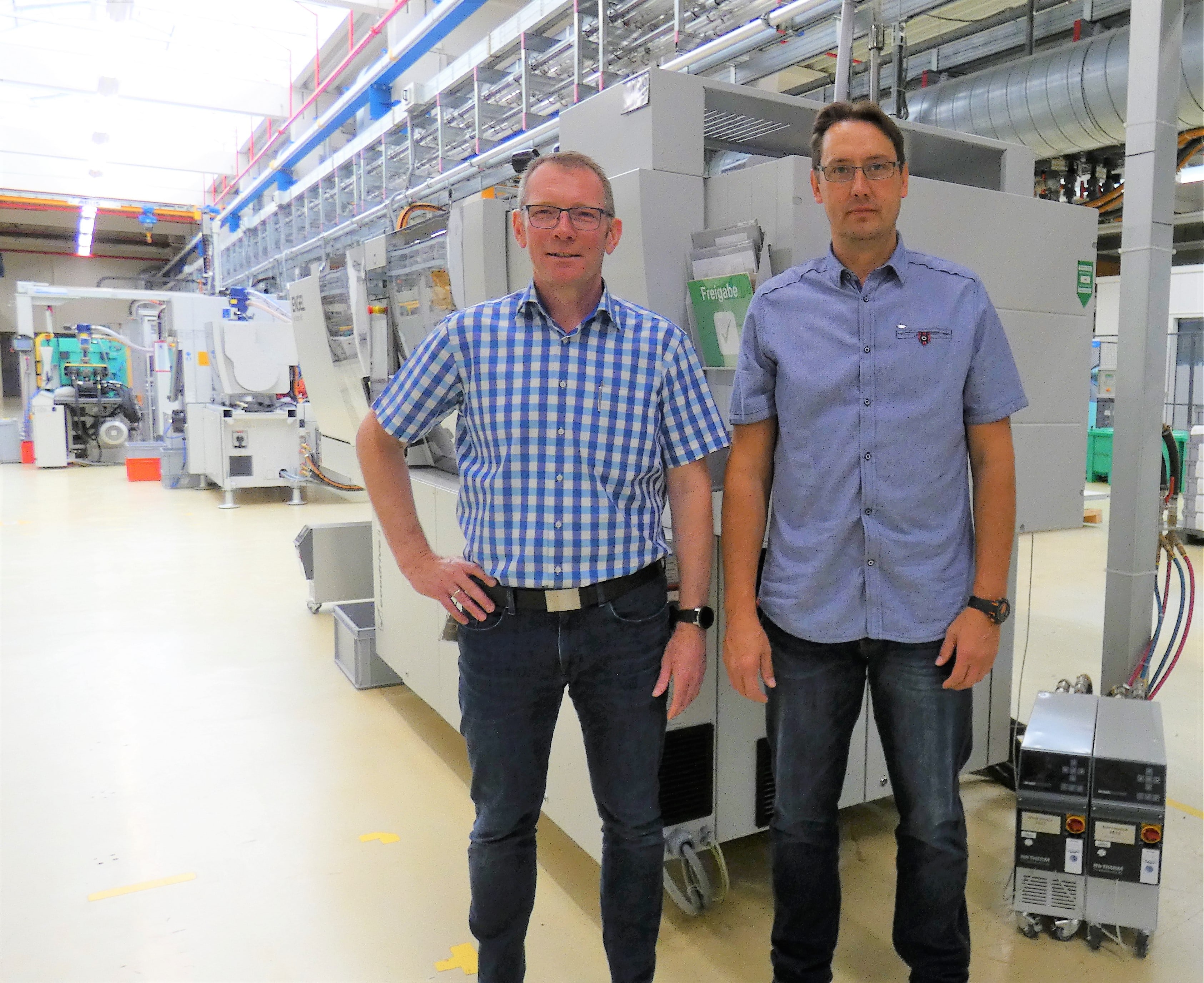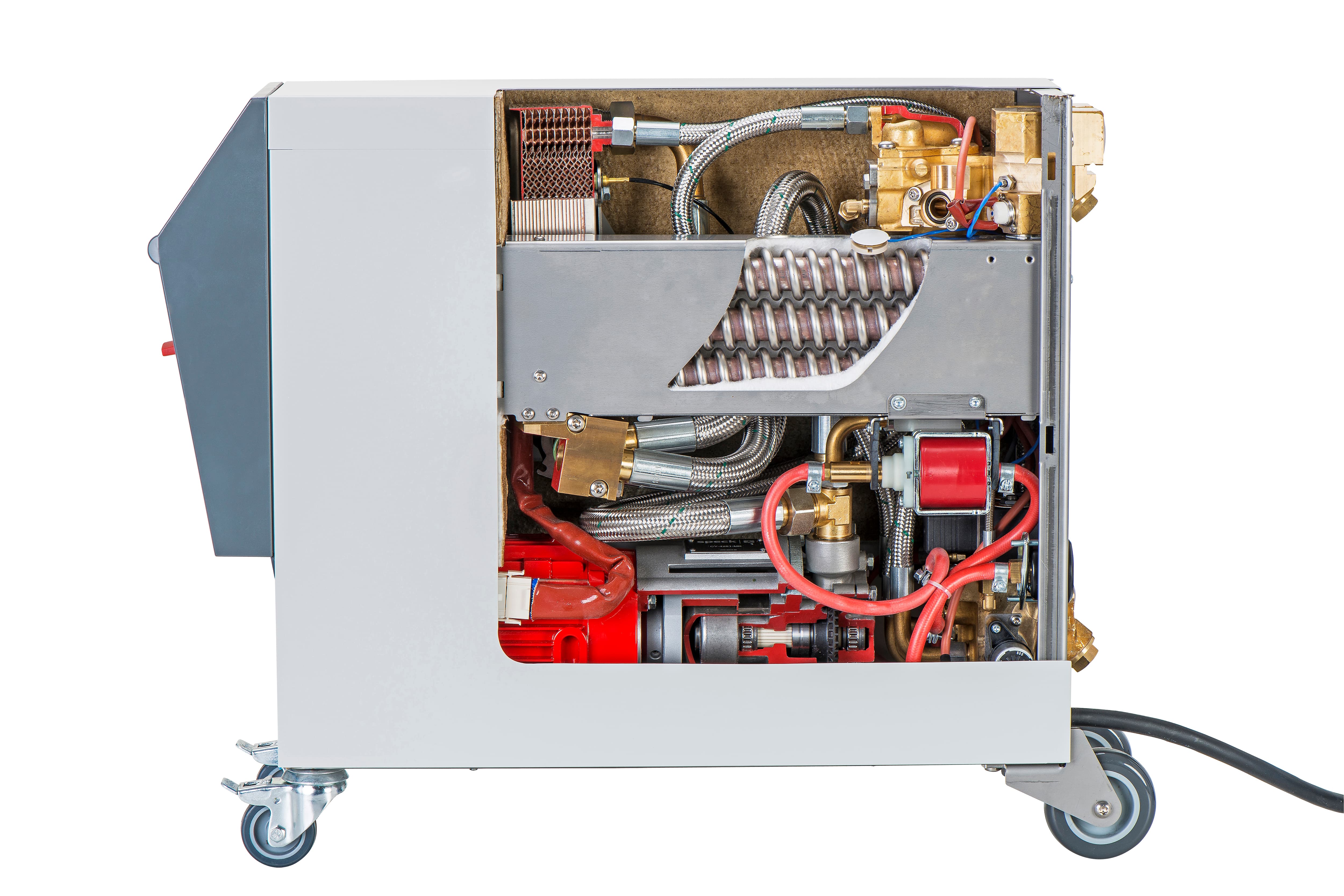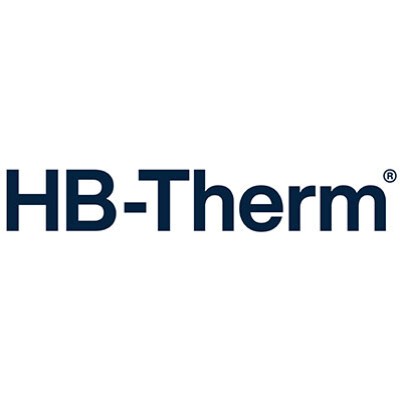Problem-free temperature control of complex tools
A medical technology manufacturer manufactures analysis cells in high-cavity injection molds. Despite temperature control units with tank systems and good water quality, the near-contour cooling channels in the injection molds tend to become dirty. Find out how this problem was solved.
One partnership for all temperature control tasks
Among other things, a medical technology manufacturer produces analysis cuvettes in multi-cavity injection molds. However, during 24/7 production and when temperature control units with tank systems are being used, the extremely narrow, conformal cooling channels tend to get dirty, despite good water quality. These problems could be solved by using temperature control units that continuously exchange the system water — without oxygen contact and contamination-free — in closed cooling circuits. This is not the only application where manufacturers rely on a close partnership with a temperature control equipment manufacturer that goes far beyond the delivery of innovative technology.
When the technology specialists from Balda Medical and HB-Therm meet, it’s usually in a very informal atmosphere. Not only because they’ve known each other for years, but because both sides know what they can expect from each other: openness and reliability describe the relationship between the two companies. At Balda Medical, they know exactly what they want: fast, efficient solutions for questions arising from client specifications or from internal process requirements. And at HB-Therm, you can rely on the briefings from Balda and know: if you give good, fast and precise answers, then the customer is satisfied. Also and especially because it concerns the highly sensitive area of medical technology.
The partnership between Balda Medical in Bad Oeynhausen, a subsidiary of the Italian Stevanato Group, and the Siegburg branch of HB-Therm (St. Gallen, Switzerland) has existed since 2011. Balda Medical’s production manager Rainer Koops explains how the collaboration came about: “In the course of the validation of one of our injection molding components, warping problems occurred with a tray after a climatic storage test, which had to be eliminated quickly due to deadline pressures at the start-up of series production. The warping issue was ultimately due to flow problems in the temperature control circuits, which could not be solved with the existing temperature control technology. At that time, only HB-Therm had a viable solution on hand with their equipment technology, which was able to overcome our problems. Since that time we’ve been working very closely and trustingly together”.
This will remain the case in the future as well because the ongoing use of its long-standing partner’s temperature control technology is currently in full swing at Balda Medical — and also in terms of training, maintenance and the stocking of spare parts. Andrej Gossen, Head of Process Technology at the medical technology company, comments: “Our concentration on just a few trustworthy and dependable working partners like HB-Therm not only brings high-quality, reliable technology into our business, on which we’re then able to build, but also saves our process mechanics and technicians having to frequently rethink in terms of operating and connecting the units. We reduce our training expenses, and spare parts only have to be kept in stock by a few suppliers. This saves us both time and money”.
Medical technology requires stable processes
In medical technology, you’re usually dealing with rather long-running manufacturing processes over a period of years, with production runs in the millions that above all have to be steady. “We’ve specified all our processes properly”, emphasizes Rainer Koops. “As a result, HB-Therm knows exactly what we expect from their temperature control technology in order to meet our requirements. That’s a prerequisite for a smoothly running production to meet the needs of our customers, which include renowned international names from the pharmaceutical sector”.
In the meantime, more than 150 units from the specialist for temperature control technology are in production at Balda Medical — and the trend is rising. In addition to the modern Thermo-5 temperature control units with Flow-5 flowmeters, a Clean-5 cleaning unit for HB-Therm mold circuits is also used to remove impurities which, as well as reducing the flow rate, also lead to a deterioration in heat transfer. “We continuously check and document our water quality and the required flow rates in order to be able to demonstrate to our customers that, in this area as well, we consistently adhere to the highest quality standards”, comments Andrej Gossen on the topic of QA. “Our water treatment is run centrally, separated into mold cooling and mechanical cooling. This is also done because there are different temperature levels and we can work much more energy-efficiently in this way”.
Cuvettes: high-precision continuous production perfectly tempered
On the machines, analysis cuvettes for use in laboratory immunology analysis are produced in multi-cavity molds. This also revealed the problems that eventually led to the two companies working together. Despite good water quality, the conformal cooling channels of 1 to 2 mm diameter in the injection molds tend to get dirty during 24/7 production, when temperature control units with tank systems are being used. This can result in an increased scrap rate, meaning production may have to be stopped completely in order to carry out early maintenance on the injection molds. Such defects must not occur with these products, which are manufactured in millions of units.
HB-Therm with its Thermo-5, which continuously exchanges the system water in closed cooling circuits without oxygen contact and contamination-free, was able to solve the problems and bring stability to the thermal processes. Accordingly, the maintenance intervals have been extended by 100 percent, with consistently high-quality results. “Due to the even distribution of the flow rates, an increased proportion of chemicals due to evaporation is also no longer an issue”, is the way Rainer Koops describes the advantages of this technology.
In the case of the cuvette molds, five Thermo-5s are in operation on the machines. A total of 18 cooling circuits are required to ensure problem-free temperature control of the complex molds. The joining of cuvettes and segments is automated and centralized. These segments are produced on another injection molding machine. The products are 100% camera-monitored, such as the diameter of the tips. Either individually or combined, the filled segments are transparently packed in foil and assembled in cardboard boxes for delivery to the OEMs. In order to keep being able to supply even in the event of bottlenecks, Balda Medical keeps many products in the form of safety stocks in its own high-bay warehouse.
Further products can be sterilized as required at external service providers after the products have been integrated manually, partially or fully automatically into complete components in Bad Oeynhausen. Ready-for-sale goods are inspected by means of various testing instances, such as by means of optical or tightness checks and spot or 100 percent checks, for instance by applying a vacuum or high voltage. These processes are documented by quality assurance per batch or per part.
Thermo-5 equipment is suitable for cleanrooms
In addition to the standard closed temperature control circuit, the cleanroom package for the water-based Thermo-5 consists of fiber-free insulation, abrasion-resistant PUR rollers, and a high-gloss finish. Equipped in this way, the emission of vapors or particles into the environment of the temperature control units and thus into the controlled environment is effectively prevented.
In order to ensure reliability from the very first use of the temperature control units, all Thermo-5 units are subjected to detailed internal quality testing and calibration prior to delivery. The most important data is recorded in a protocol that is enclosed with the units and certifies successful testing. The clean room-compatible version achieves ISO Class 6 (Class 1000) in the “at rest” functional state and ISO Class 7 (Class 10 000) in the “in operation” functional state, thus exactly complying with Balda Medical’s specifications, who produce both in docked-on clean rooms and directly in encapsulated clean rooms of the ISO Classes 8 to 5.
Precision also required in the maintenance
“When high-temperature applications, even high-precision ones, run three shifts, seven days a week, you also have to take very good care of their maintenance and repair”, says Andrej Gossen knowingly. “That’s why we have so-called 'backup molds' which allow us, after a short set-up time, to continue production during a mold maintenance phase”. Balda Medical does not (yet) have its own mold shop, but machines and molds are maintained in their own departments. “Since our customers invest in the molds used”, Gossen goes on to say, “we implement the most efficient solution for them by using mold makers from all over the world.” Rainer Koops also dares to take a look into the future: “Due to our affiliation with the Stevanato Group, we are also working on synergies, such as the combination of glass and plastic to distinct products. In the long run, this will also include setting up our own mold making department.”
The partnership is characterized by a high level of satisfaction
As cooperating companies, Balda Medical and HB-Therm have known each other both for a long time and very well. “HB-Therm’s German team, in particular, has now become just the right expert partners for us — they know exactly where our problems lie and how to solve them. As a result, lengthy briefings and solutions have long become a thing of the past”, Rainer Koops says calmly. “We rely on that which distinguishes HB-Therm from other manufacturers: the high precision of their units, the closed cooling circuits with no oxygen contact in the system as well as the cyclic system water exchange. It’s also important to mention this again here because in our business we don’t want to rely on estimates or 'trial and error' in order to achieve high-quality series production, but rather on meaningful calculations, such as regarding pressure drop, flow measurement and, associated with that, mold cooling design. The faster we can solve such tasks together, the faster we can start with design, implementation, ramp-up and series production. Which in turn has a tangible economic impact.”
Their cooperation is well-established, their partnership is working — that’s the tenor of the statements on both sides. Information sharing is now set up, delivery times, offers and also the provision of test equipment suit. But there is also another dimension, as Rainer Koops notes: “The Thermo-5s are of course in the upper price range. But we’ve found that the maintenance costs over the life of the HB-Therm products are lower than for other brands. As a result, the price difference quickly pays for itself with the same operating times”.
